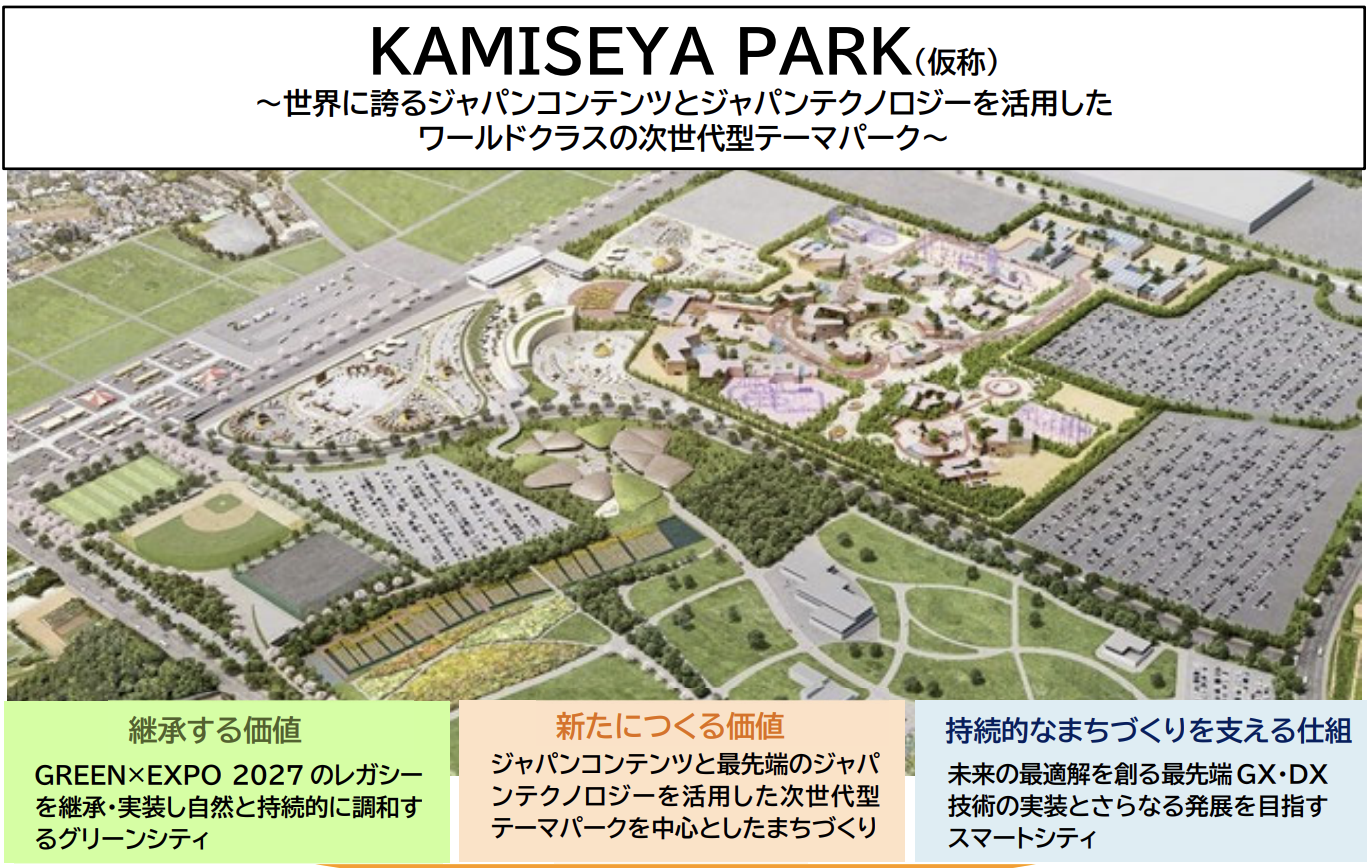While many people are happy or sad about daily price fluctuations, the truly wealthy look at their assets from a completely different perspective.
They focus not on the current "price" but on the "time horizon" into the future.
They do not get distracted by short-term market noise, but take a long-term perspective to determine the intrinsic value of their assets.
This is the universal principle by which they have built and continue to protect their vast wealth.
When the stock market plummets, ordinary investors rush to sell their holdings, but the wealthy calmly analyze the situation and see it as an opportunity to buy more.
When real estate prices fall temporarily, many people are driven by anxiety, but the wealthy focus on the long-term cash flow generated by the property and determine whether the property's intrinsic value has been damaged.
This difference in thinking can make all the difference between success and failure in asset building.
In this article, we will explain from a professional perspective, using real estate investment as an example, why high-net-worth individuals focus on the time horizon, their specific way of thinking, and asset valuation techniques.
In particular, we will explain in detail, based on data, the specific benefits of long-term investment, including tax benefits and the compound interest effect.
By the end of this article, you should be able to understand the asset philosophy of the wealthy and incorporate a new perspective into your own asset building strategy.
Take the first step toward building essential assets with an eye on future value.
Why do high-net-worth individuals value their assets on a "time axis?
There is a clear reason why the wealthy value their assets on a "time horizon.
This is because they are well aware of the benefits of taking a long-term view, avoiding the risks posed by short-term price fluctuations.
Risks of Short-Term Price Volatility
The stock market and real estate market fluctuate in price on a daily basis due to a variety of factors.
However, many of these are merely "noise" caused by temporary market sentiment or speculative activity.
An investment style that only follows short-term price fluctuations is highly uncertain and mentally draining.
Furthermore, for assets such as real estate, short-term transactions not only increase the burden of transaction costs (brokerage fees, registration fees, etc.), but are also disadvantageous from a tax perspective.
Long-term increase in asset value
On the other hand, as long as the economy continues to grow and moderate inflation continues, the value of superior assets will tend to increase over the long term.
For example, income-producing real estate in good locations can be expected to increase in value itself as rents rise with economic growth and the surrounding area develops.
By assessing the future potential of their assets from such a macro perspective and taking a firm stance, high-net-worth individuals can steadily increase their assets without being swayed by transient price fluctuations.
Importance of income gains (investment income)
There are two types of gains from asset management: "capital gains" from selling assets and "income gains" from holding on to assets.
High-net-worth individuals place particular emphasis on the latter type of income gain.
Like rent income from real estate investments, regular and stable cash flow can be used as working capital for a business or as a source of funds for further investment, thus strengthening the foundation for asset building.
Compared to short-term investments that aim for capital gains, long-term investments that emphasize income gains are a far more stable strategy.
Maximization of Compound Interest Effect
The greatest benefit of long-term investment is the "compound interest effect.
By reinvesting the income earned, interest is earned not only on the principal, but also on the interest, resulting in a snowball effect of increasing assets.
The longer the investment period, the greater the power of this compounding effect.
The table below shows a simulation of long-term investment of an initial investment of 10 million yen at different yields.
| Investment period | Annual interest rate of 3 | 5% annual interest rate | Case of 7% annual interest rate |
|---|---|---|---|
| After 10 years | Approx. 13.44 million yen | Approx. 16.29 million yen | Approx. 19.67 million yen |
| After 20 years | Approx. 18.06 million yen | Approx. 26.53 million yen | Approx. 38.7 million yen |
| After 30 years | Approx. 24.27 million yen | Approx. 43.22 million yen | Approx. 76.12 million yen |
*Taxes and fees are not taken into account.
As you can see, as the investment period increases, a small difference in yield makes a big difference in the amount of assets.
In order to take full advantage of this power of time and compound interest, wealthy individuals begin asset building from a young age with a long-term perspective.
Specific Asset Valuation Techniques for "Time-based" Valuation
So, how exactly do HNWIs incorporate a "time horizon" into their asset valuation?
Here, we will explain the valuation methods and strategic thinking used by professionals.
Income Capitalization Method (DCF Method)
When evaluating the value of real estate, the "transaction case comparison method," which compares the value of real estate with surrounding transaction cases, is commonly used, but wealthy individuals and professional investors emphasize the "income capitalization method," which focuses on the cash flow that the asset is expected to generate in the future.
In particular, the Discounted Cash Flow (DCF) method, which calculates the value of an asset by discounting the future income (e.g., rental income) and the future sales price to the present value, is a representative method of valuation that takes the time axis into consideration.
This method enables more sophisticated investment decisions based on the intrinsic earning power and future potential of the property, rather than its short-term price.
Optimization of the entire portfolio
High-net-worth individuals do not dwell on the price movements of individual assets.
They always view all of their assets as a single "portfolio" and seek to optimize it as a whole.
For example, they combine real estate assets for stable income, domestic and foreign stocks for growth, bonds and precious metals for risk hedging, and other assets in a well-balanced manner according to economic conditions and their life stage.
By combining various assets with different time horizons, we aim to diversify risk and achieve stable asset growth under any market environment.
Diversified Exit Strategies (Exit)
While long-term holding is the basic strategy, HNWIs always have multiple exit strategies in mind.
They may strategically sell a portion of their assets to lock in a profit when the market is overheated.
We also actively "reposition" assets, using the proceeds to purchase other assets with higher profitability.
The important thing is to have a basic policy of holding assets for the long term, but not to stick to it, but to be flexible to changes in economic and social conditions, and to always be ready to implement the best option at the best time.
Examples of Time-Based Practices
Here are some specific examples of time-based asset building.
For example, consider the case of a person who purchased an income-producing property in the city center in his/her 30s and held it for 20 years.
Assuming that the property price at the time of purchase is 50 million yen and the annual rental income is 2.5 million yen (surface yield of 5%), the total rental income earned over 20 years would be 50 million yen.
Furthermore, by putting this rental income into another investment, the compounding effect will work and the real return will be even greater.
In addition, if the property is in a good location, there is a good chance that it can be sold at a price equal to or higher than the purchase price when sold after 20 years.
If the property could be sold for 50 million yen, together with the rent income of 50 million yen over 20 years, it would effectively be an asset of 100 million yen.
Furthermore, since the preferential transfer income tax rate (approximately 20%) due to long-term holding for more than 5 years is applied, you can secure a sufficient profit even after taxes.
Thus, by taking advantage of the time axis, it is possible to steadily and efficiently increase assets.
Data Comparison: Short-Term Buying and Selling vs.
In real estate investment, there is a big difference between short-term trading and long-term holding, not only in terms of objectives and risks, but also in terms of taxation.
In particular, the transfer income tax rate on gains on sales varies greatly depending on whether the ownership period exceeds five years.
This is also an indication of the government's policy of discouraging speculative short-term trading and promoting long-term real estate ownership as high-quality stock.
| Comparison Items | Short-term sales (ownership period of 5 years or less) | Long-term holdings (ownership period over 5 years) |
|---|---|---|
| Main Purpose | Capital gain (gain on sale) | Income gain (rental income) + long-term increase in asset value |
| Tax rate (transfer income tax)[1] | Approx. 39.63% ( income tax 30% + inhabitant tax 9% + special income tax for reconstruction) | Approx. 20.315% ( 15% income tax + 5% inhabitant tax + special income tax for reconstruction) |
| Risks | Risk of sharp decline in market prices, high tax burden, frequent transaction costs | Vacancy risk, building aging, risk of rising interest rates |
| Advantages | Potential for large profits in a short period of time | Stable income, tax benefits, enjoyment of compound interest effect |
As this table shows, long-term ownership is overwhelmingly advantageous in terms of taxation.
The preference of high-net-worth individuals for long-term investments is based not only on philosophy, but also on these very rational economic advantages.
Conclusion: Toward asset building with an eye on future value
In this article, we have explained the reasons why HNWIs value their assets based on a "time horizon" rather than current "price," and the specific methods they use to do so.
They steadily build up their assets by taking full advantage of long-term economic growth, income gains, and the power of compound interest, rather than being distracted by the "noise" of short-term price fluctuations.
The important thing is to have a perspective that sees the intrinsic value that the asset will create in the future, rather than being swayed by short-term gains or price fluctuations.
The key to success in real estate investment is to carefully select properties from the perspective of whether or not they can generate stable income over the long-term span of 5, 10, or more years, and whether or not they can be expected to increase in value in the future.
There are also significant advantages to long-term ownership in terms of taxation.
The transfer income tax rate is significantly reduced from approximately 39.63% to 20.315% after an ownership period of more than five years.
This tax incentive is proof that the government encourages long-term asset ownership, and wealthy individuals take full advantage of this system.
Furthermore, considering the compound interest effect, the longer the investment period, the greater the impact of a small difference in yield on the final amount of assets.
If assets are invested for 20 years at an annual interest rate of 5%, they will grow by approximately 2.7 times, and at an annual interest rate of 7%, they will grow by approximately 3.9 times.
As these figures show, having time on your side is the most powerful weapon in asset building.
We encourage you to take this opportunity to review your own asset portfolio from a new perspective of "time axis.
Strategic asset building with an eye on future value will be your compass for overcoming uncertain times and achieving true wealth.
Frequently Asked Questions
Q1:What is the specific period of time for long-term holdings?
A1:One important guideline is an ownership period of more than five years, which provides tax benefits. However, it is not uncommon for high net worth individuals, who are true long-term investors, to continue to hold assets for 10, 20 years, or even across generations. The key is not the time period itself, but rather having a strategy that you can flexibly reassess as your life plans and economic conditions change.
Q2:Should I hold for the long term even if prices continue to fall?
A2: If there is no change in the intrinsic value of the asset (e.g., profitability of the property or superiority of the location), a short-term price decline can be viewed as an "opportunity to buy more at a lower price. However, if there is a long-term decline in the population of the area or some other change that shakes the fundamental value of the asset, you should quickly review your strategy, including cutting your losses.
Q3:Should all assets be held for the long term?
A3:No, this is not universally true. While the core of the asset portfolio should be solidified with quality assets held for the long term, it is also extremely important to maintain a certain percentage of highly liquid financial assets (cash, deposits, short-term bonds, etc.) to prepare for sudden capital needs or to capture short-term market opportunities. Optimizing the overall asset balance and objectives is the key to stable asset growth.

Daisuke Inazawa
Representative Director of INA&Associates Inc. Based in Osaka, Tokyo, and Kanagawa, he is engaged in real estate sales, leasing, and management. He provides services based on his extensive experience in the real estate industry. Based on the philosophy that “human resources are a company's most important asset,” he places great importance on human resource development. He continues to take on the challenge of creating sustainable corporate value.

.png)












